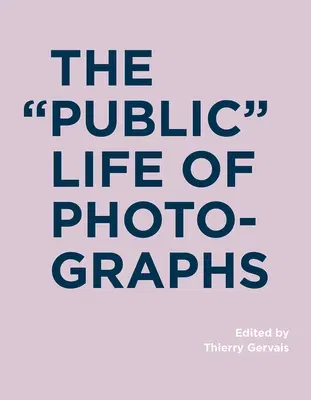An exploration of the relationship between how photographs are made
available to the public and how they are received and understood.
Do we understand a photograph differently if we encounter it in a
newspaper rather than a book? In a photo album as opposed to framed on a
museum wall? The "Public" Life of Photographs explores how the various
ways that photographs have been made available to the public have
influenced their reception. The reproducibility of photography has been
the necessary tool in the creation of a mass visual culture. This
generously illustrated book explores historical instances of the
"public" life of photographic images--tracing the steps from the
creation of photographs to their reception.
The contributors--international curators and scholars from a range of
disciplines--examine the emergence of photography as mass culture:
through studios and public spaces; by the press; through editorial
strategies promoting popular and vernacular photography; and through the
dissemination of photographic images in the art world. The contributing
authors discuss such topics as how photographic images became objects of
appropriation and collection; the faith in photographic truthfulness;
Life magazine's traveling exhibitions and their effect on the
magazine's "media hegemony"; and the curatorial challenges of making
vernacular photographs accessible in an artistic environment.
The "Public" Life of Photographs is the first volume in a series
called RIC Books, which is copublished by MIT Press and the Ryerson
Image Centre (RIC). The RIC, located at Ryerson University in Toronto,
Canada, is a museum dedicated to the exhibition, research, study and
teaching of photography and related disciplines.
**Contributors
**Geoffrey Batchen, Nathalie Boulouch, Heather Diack, André Gunthert,
Sophie Hackett, Vincent Lavoie, Olivier Lugon, Mary Panzer, Joel Snyder

